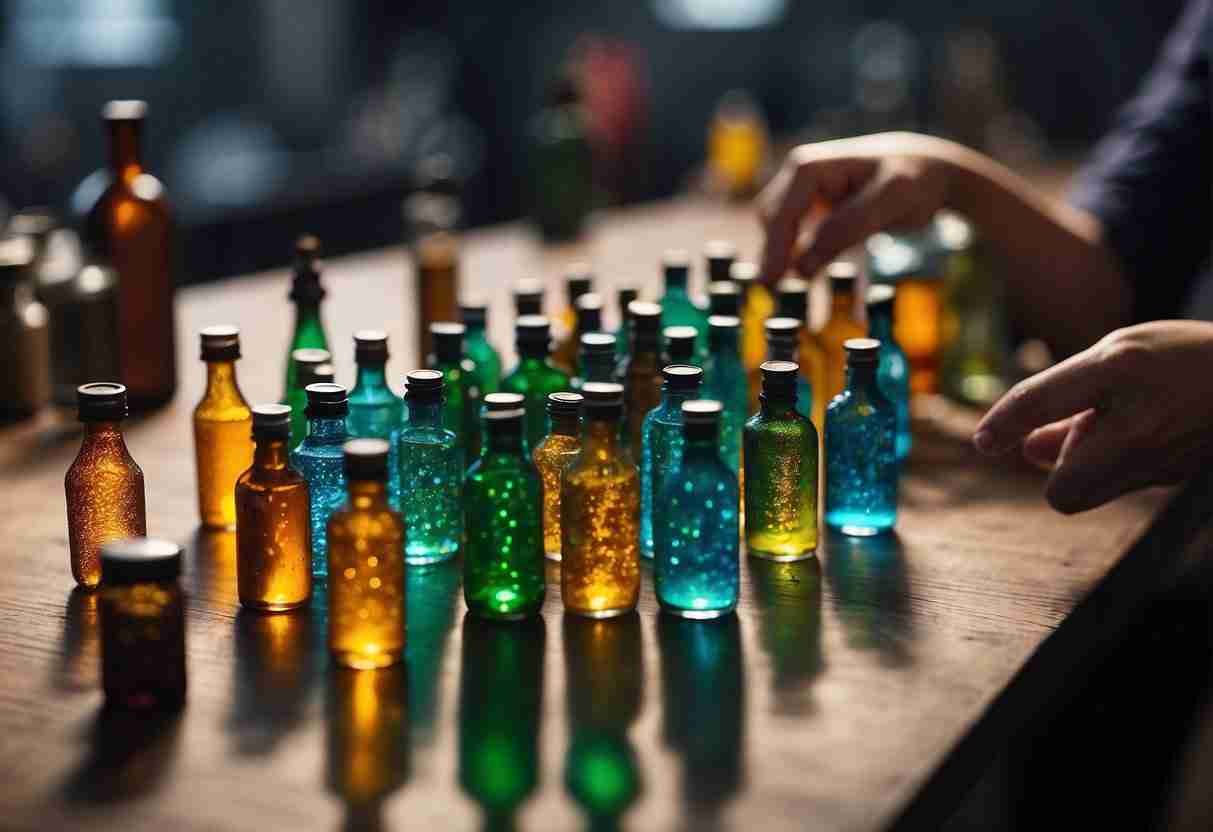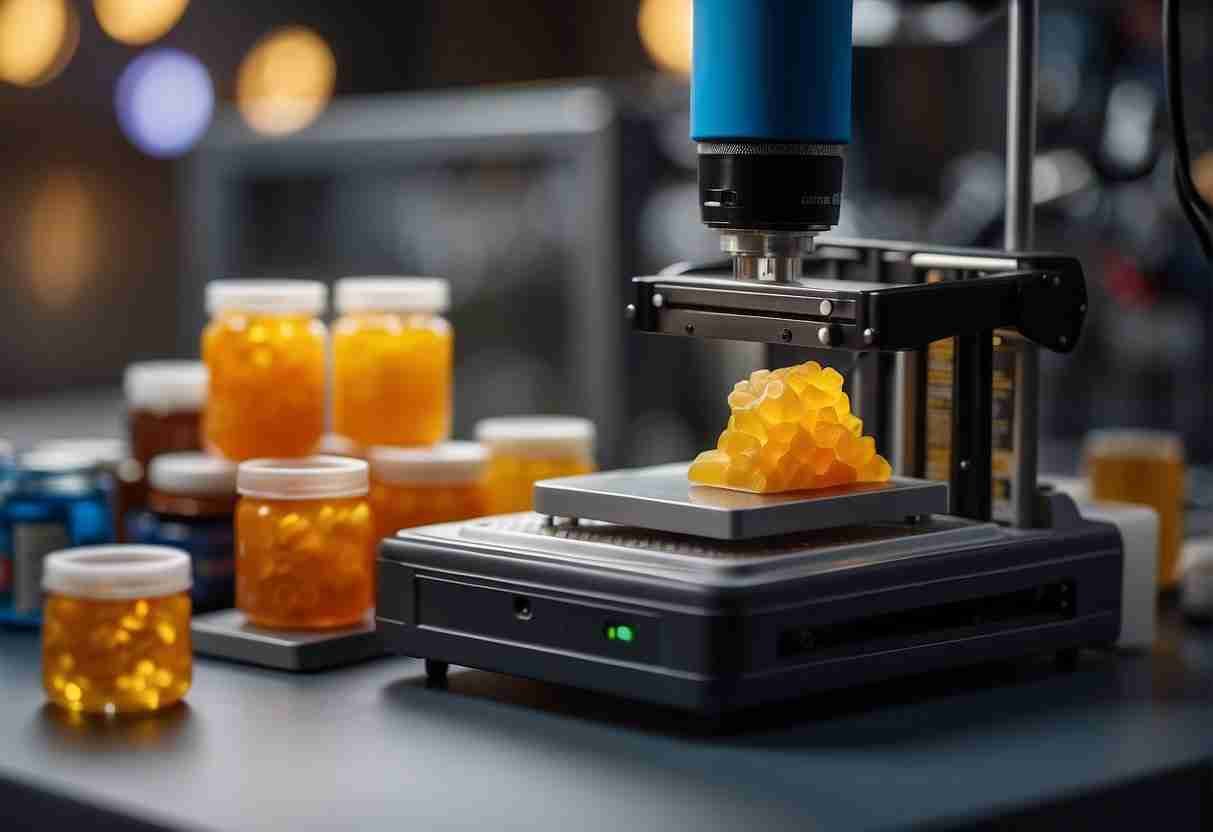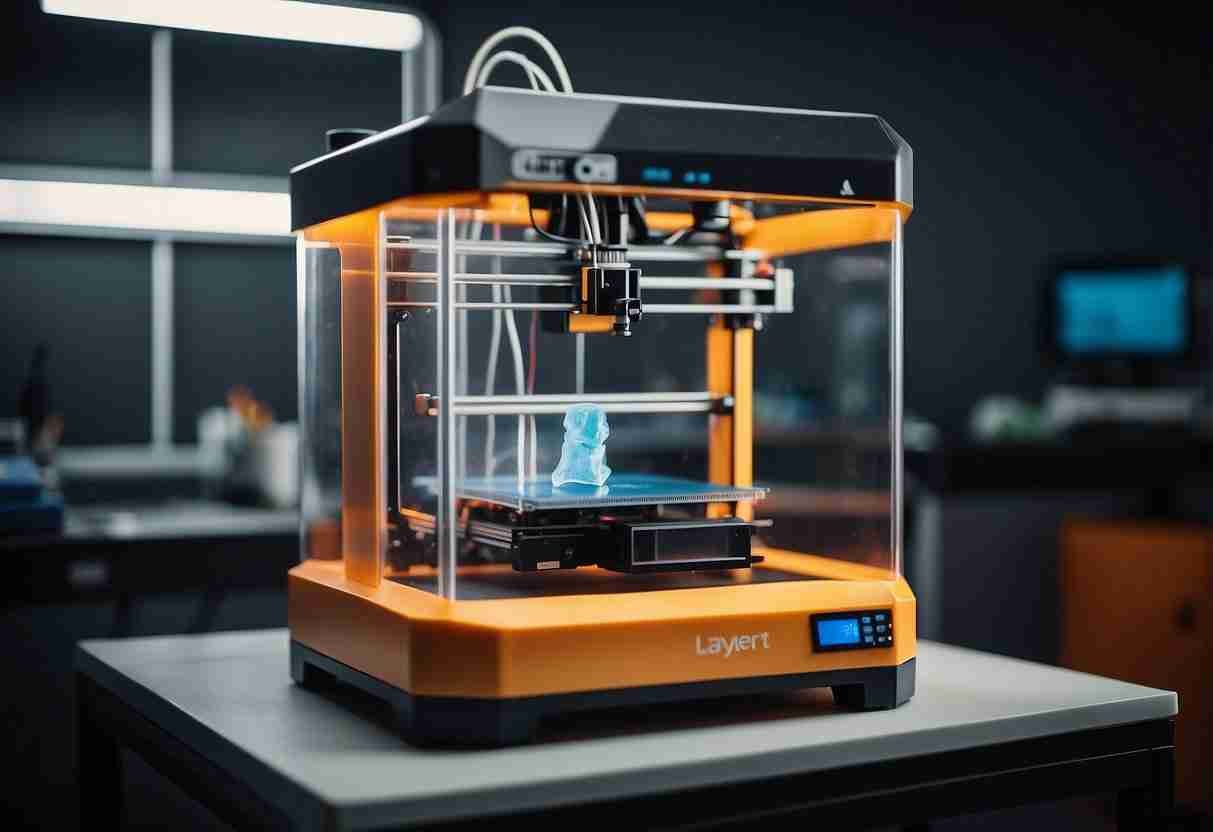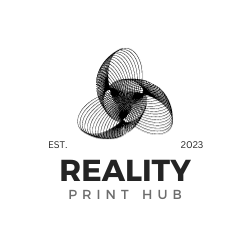Resin has become a popular material in the world of 3D printing for creating detailed and intricate miniatures. Resin printing is ideal for hobbyists and professionals who want to produce miniature figures with high precision, as it has the ability to capture fine lines and features required for smaller-scale models. Choosing the right type of resin is crucial to achieving stunning results, as resin properties greatly affect the finish and durability of the printed items.

Choosing the best resin for printing miniatures can be challenging due to the wide range of available options. Several factors, including viscosity, curing time, and color options, significantly impact the outcome of a 3D-printed miniature. Therefore, it is crucial to consider these factors alongside the specific printer capabilities and the intended use of the miniature. For example, gaming figures require a balance of detail and strength, while display models prioritize an exceptional finish. Taking these factors into account can help ensure a successful 3D printing experience.
Key Takeaways
- Resin is favored for detailed miniature 3D printing due to its precision.
- The ideal resin choice depends on various factors, including the printer specs.
- The quality and durability of miniatures can be improved by applying the proper resin correctly.
Understanding Resin 3D Printing
Understanding how resin-based technology works is important when exploring 3D printing to create detailed miniatures. This section examines the fundamental concepts, the technologies involved, and the various kinds of resins available for this purpose.
The Basics of Resin 3D Printing
Resin 3D printing relies on a light source to cure liquid resin into solid objects, particularly in the production of miniatures. Resin printers offer high-resolution results for capturing fine details. This process involves adding layers to the object and curing each layer with UV light. Print time can vary depending on the object's complexity and the layer height selected.
SLA Printers and LCD 3D Printing Technology
Stereolithography (SLA) and Liquid Crystal Display (LCD) are two prominent printing technologies used in resin 3D printing. SLA printers use a laser to cure the resin, moving point by point, which results in precise details suitable for intricate miniatures. In contrast, LCD printing technology employs a UV light source that projects an entire layer's image onto the resin, leading to faster print times.
Types of Resin: Characteristics and Uses
A variety of types of resin are available for 3D printing miniatures, each with different chemical properties. Standard resins are typically used for general-purpose printing and are known for their affordability. Water-washable resins allow for easier post-processing, while tough resins enhance functional parts' durability. Flexible resins are bendable and stretchable, offering diverse application possibilities. The choice of resin is pivotal as it affects not only the aesthetic but also the functionality and durability of the printed miniatures.
Choosing the Best Resin for Miniatures

To achieve optimal results, factors such as detail accuracy, mechanical strength, and ease of use should be considered when choosing the best resin for 3D printing miniatures.
Factors Affecting Resin Choice
Material Properties: The choice of resin can greatly affect the final quality of the printed miniatures. During the printing process, viscosity and curing time are crucial factors. The material's wear and impact resistance can also determine the miniature's longevity.
- Water Washability: A water-washable resin might be a good choice for easier post-processing, as it simplifies the clean-up procedure.
High-Detail Resin Versus Standard Options
Depth of Detail: For miniature enthusiasts and professionals, high-detail resin is preferred over standard options. High-detail resins are formulated to capture fine details essential for intricate miniature models.
- Print Quality: Materials such as Phrozen Aqua 8K set the standard for print quality, offering smooth surfaces and the precision required for detailed miniatures.
The Role of Tensile Strength in Resin Selection
Tensile Strength: When choosing a resin, tensile strength indicates how well the material can withstand tension without breaking. Higher tensile strength translates to high impact resistance, making the miniature more durable during handling and use.
- Durability vs. Flexibility: A balance between strength and flexibility can prevent brittleness in miniatures, allowing them to sustain minor falls or pressures during gameplay or display.
Popular Resins for Miniature Printing

When it comes to 3D printing miniatures, the choice of resin impacts the level of detail and durability of the finished product. Different brands offer a range of options to suit various quality and budget needs. Some are optimized for high-resolution printing, while others provide a more cost-effective solution.
Siraya Tech and Its Reputation
Siraya Tech has established itself as a leader in high-performance resins for miniature printing. Their formulations are designed to achieve great results in terms of detail and smoothness, which is necessary for good-quality miniatures. The Siraya Tech Cast 3D Print Resin offers excellent durability and precision. Siraya Tech is a top choice for serious hobbyists and professionals alike.
Comparing Anycubic and Elegoo Resins
The Anycubic Photon Mono and Elegoo Mars 3 Pro are highly revered in the 3D printing community. Users of Anycubic Photon Mono have a variety of resins to choose from, including affordable standard resins that cater to specific needs. Additionally, Elegoo offers the Elegoo Mars 3 Pro, noted for its 6.6″ 4K monochrome screen that enhances curing times, resulting in smooth surfaces and detailed prints. Both brands offer a variety of resins, each tailored to different aspects of miniature printing.
Affordable Choices: Standard and Water-Washable Resins
Standard resins that offer a good balance between quality and cost are available for those on a budget. These resins allow hobbyists to print satisfactory miniatures without a significant investment. Water-washable resins like ELEGOO 8K Water Washable Resin are increasingly popular, providing the convenience of easy cleaning without the need for alcohol. These affordable options can deliver impressive results for new enthusiasts and seasoned 3D printing veterans.
Setting Up Your 3D Printer for Resin Printing

When you're getting ready to print miniatures using a resin 3D printer, the goal is to achieve a high level of detail. Proper setup of the print bed and build platform, along with meticulous calibration, is essential to ensure your prints turn out successfully.
Preparing the Print Bed and Build Platform
Before printing, clean the bed for proper adhesion and finish:
- Examine the build platform for any residues or particles. Remove these impurities with isopropyl alcohol.
- Check the flatness of the build platform to ensure uniformity. Slight variances in uniformity can cause print failures.
Once cleaning is complete, the next steps center around preparing for the print:
- Apply a release agent, if necessary, to facilitate easier removal of the finished miniature.
- Secure the build platform onto the printer, making certain the platform is stable and properly aligned.
Calibration for Precision in Miniatures
The precise calibration of your printer is critical for capturing the intricate details of miniatures. This involves:
- Setting the correct exposure time is vital for the resin to cure appropriately. Exposure times are often resin-specific and influenced by the layer height and screen resolution.
For optimal results, adhere to these calibration procedures:
- Level the build platform to ensure the entire surface is parallel to the screen. This step prevents layer inconsistencies and contributes to the high level of detail required for miniature printing.
- Adjust the screen resolution according to the manufacturer's specifications to match the level of detail needed for miniature printing. Higher resolutions yield finer details in prints.
Following these procedures for preparing and calibrating your resin 3D printer, the printed miniatures should exhibit exceptional detail and adherence to design specifications.
Printing Process and Techniques for Resin Miniatures

Creating resin miniatures with fine details requires meticulous attention to support structures and surface finishes.
Support Material and Post-Processing
Support material is indispensable for creating miniatures with overhangs or intricate designs. Support structures act as temporary scaffolds during printing, ensuring parts don't deform or collapse. After printing, these support structures must be carefully removed, often with a pair of fine-tipped snips. This process is followed by post-processing, which usually involves washing the print in isopropyl alcohol to remove any uncured resin.
For detail preservation, post-processing also includes curing under UV light, which solidifies the resin, enhancing the miniature's strength and stability. Careful management of these steps can significantly affect print time and the final result.
Achieving Smooth Surfaces and Detailed Features
Layer height is a setting used in resin printing that helps to obtain smooth surfaces and fine details. Lower layer heights lead to a smoother finish and better high resolution but increase the total print time. On the contrary, thicker layers reduce print time but can result in visible layer lines, detracting from the miniature's appearance.
Strategies to mitigate layer lines include:
- Using finer nozzles for higher detail.
- Opting for premium resins tailored for miniatures, like ELEGOO 8K Water Washable Resin and Phrozen Aqua-Gray 8K 3D Printing Resin, which are known for their high precision.
Ultimately, the goal is to balance the print's resolution with the pragmatic aspects of printing, ensuring both detail and structural integrity without extended print times.
Enhancing Miniatures with Post-Processing
After 3D printing miniatures, the journey towards a stunning final product continues with post-processing steps. These techniques transform the raw prints into detailed, durable models ready for display or tabletop gaming.
Cleaning and Curing: Essential Steps After Printing
Once the 3D-printed minis emerge from the printer, they need to undergo cleaning to remove any uncured resin. This involves a bath in isopropyl alcohol or a specialized cleaning solution. Following the cleaning, the models require curing under UV light, solidifying the resin and enhancing its strength. Miniatures may remain sticky and more susceptible to damage without proper cleaning and curing.
Cleaning Method:
- Submerge the miniatures in isopropyl alcohol for 5 to 10 minutes.
- Use a soft brush to remove excess resin gently.
Curing Technique:
- Expose the miniatures to UV light for several minutes.
- Ensure even exposure by rotating the models.
Advanced Techniques for Detailing and Painting Resin Models
Detailing and painting are where the true transformation occurs. Miniatures become poised for a paint job by first employing a coat of primer. Acrylic paints are the go-to choice due to their ease of use and quick drying time. For intricate designs, dry brushing reveals depth and texture.
- Painting Steps:
- Apply a primer coat for paint adhesion.
- Base coat the model with the dominant color.
- Highlight details using finer brushes and lighter colors.
- Use metallic paints for a realistic metal effect.
Artists should apply a clear coat after painting a miniature to protect the paintwork and extend the life of the 3D-printed mini's appearance.
Troubleshooting Common Issues in Resin Printing
The resin printing process can improve the quality of miniature objects produced through 3D printing. This section covers effective methods for troubleshooting common printing issues and maintaining printers to ensure consistent, long-lasting results.
Addressing Printing Failures and Error Resolution
- Calibration and Exposure: Proper calibration of the build plate is crucial for consistent success in resin printing. Increasing the bottom layer exposure time can significantly reduce printing failures.
- Error Identification: In-depth personal experience with the printer's operations allows for quicker identification and resolution of errors.
- Customer Service Utilization: When encountering complex issues, utilizing customer service provided by the manufacturer can expedite the troubleshooting process.
Managing Resin Printers' Maintenance for Longevity
- Routine Cleaning: Regularly cleaning the resin vat and build plate ensures that leftover materials do not cause future issues. This slows the degradation of printer components, allowing the printer to function optimally for a longer time.
- Exposure to Elements: Direct sunlight and other environmental factors can compromise the integrity of miniature prints, so protective measures should be taken to shield the printer and resin.
- Documented Maintenance: Keeping a record of maintenance activities and schedules is advantageous. Not only does it provide a tangible history of upkeeping, but it also helps in assessing when parts may need replacing or when the printer requires a thorough service check-up.
Comparing Resin Printing to Filament Printing
When considering 3D printing for miniature models, the deciding factor often lies in the differences between the resin and filament printing technologies. The print job's specific requirements, material properties, and desired resolution determine the best choice.
Pros and Cons of Resin vs Filament
Resin 3D Printing:
- Pros:
- High resolution: Resin printers are noted for producing prints with extremely fine detail due to their precise laser or light, making them ideal for miniatures.
- Smooth finish: Resin 3D printed models have smooth surfaces, requiring less post-processing work.
- Cons:
- Cost: Generally, it is more expensive in terms of both printer cost and material expense.
- Post-processing: Extensive cleaning and curing are required after printing.
Filament 3D Printing:
- Pros:
- Cost efficiency: Filament printers and materials are cheaper than resin 3D printers.
- Ease of use: They are often considered more user-friendly and better suited for beginners.
- Cons:
- Lower resolution: Expect to see lower detail levels compared to resin prints.
- Rougher finish: The lines between the layers of the material may be more noticeable, requiring additional sanding and finishing work to achieve a smooth surface.
Use Cases: When to Choose Resin Over Filament
Resin Materials are recommended when:
- Detail is paramount: The resin's superior detail is a clear advantage for intricate designs like miniatures.
- A smooth finish is desired: A high-quality final product is needed with minimal post-processing.
Filament Printers are the choice when:
- Larger objects are being printed that do not require the high resolution of a resin 3D print.
- Ease of use is a concern, especially for beginners.
Selecting between resin and filament printing depends on the use case, detail importance, cost, and material properties needed.
Leveraging Online Resources and Communities for Resin Printing
Online resources and communities offer invaluable information and support for enthusiasts seeking the best resin for 3D printing miniatures. These platforms can shorten the learning curve and provide insights into advanced techniques and materials.
YouTube Channels and Printing Articles for Learning
YouTube Channels have become a cornerstone for sharing expertise in resin printing. Channels like 3D Printing Nerd and Maker's Muse offer detailed tutorials, reviews, and tips, which are particularly useful for those just starting out with printing miniatures. These resources provide practical steps for the printing process and explore the nuances of different resins, infill patterns, and support strategies.
Printing Articles provide a more in-depth look at the specifics of resin printing. Websites like All3DP and the 3D Sourced list provide insight into various resins ideal for miniature printing. They dissect properties of 3D printing, such as tensile strength, flexibility, and print resolution, offering guidance for selecting the correct resin for different prints.
Popular Online Platforms for Resin Printing Enthusiasts
Forums and community pages are a treasure trove for 3D printing enthusiasts. The Thingiverse page stands out as a popular platform, catering to a wide range of 3D printing interests, including a knowledgeable discussion on miniatures. Here, users can share models, provide feedback on designs, and discuss print settings that work best with specific resin types.
Customer Service portals are often overlooked but provide substantial assistance. Resin manufacturers and printer companies maintain support pages and community forums to help troubleshoot issues and improve the printing experience. Engaging with these services can help users get the most out of their resins and 3D printers.
Passionate individuals can refine their craft, exchange knowledge with peers, and discover best practices for 3D printing miniatures through online resources and communities.
Future Trends in Resin 3D Printing for Miniatures
With the rapid advancement of technology, the world of resin 3D printing is poised to experience significant innovations in both materials and equipment. This will be accompanied by an evolution of printing best practices, enhancing the artistry and functionality of printed figures, particularly for miniatures.
Innovations in Resin Formulations and Printers
High-Resolution Resin: Future resin formulations are anticipated to produce even higher-resolution prints, enhancing the details and precision needed for miniature figures. Emerging resins should offer improved properties such as increased durability.
- Tough Resin: The development of tougher resins will allow for more robust miniatures that can withstand the wear and tear of regular usage.
LCD Screen and Printers: The Phrozen Sonic Mighty and Phrozen Sonic Mini are expected to introduce larger build volumes and more intricate light modulation, ensuring finer feature reproduction.
- Extra Features: LCD printers will likely incorporate extra features to enhance the user experience and produce better-quality outputs, including more intuitive interfaces and advanced temperature control mechanisms to maintain print consistency.
The Evolution of Miniature Printing in the 3D Printing Community
Community Collaboration: In the future, we will see a stronger focus on community-driven improvements and open-source collaborations in the 3D printing industry. This approach will help improve 3D printing practices by allowing communities to share tips to achieve the best results with different resin types and printer models.
Educational Resources: The 3D printing community can expect a surge in educational materials, from detailed tutorials to specialized courses.
- Better Quality: Community insights and shared experiences will lead to better-quality prints as users collectively discover the most efficient techniques for various resin types.
